|
|
Making ‘Immaterials: Light painting WiFi’
- Written by Einar Sneve Martinussen
- Monday, 7 March , 2011
It has been very exiting to see how our film 'Immaterials: Light Painting WiFi' has being linked to and discussed across a broad range of audiences, disciplines and fields of research, including urbanism, technology, architecture, advertising and art.
A common question, particularly from interaction design and technology communities is how we designed and built the WiFi measuring rod. So we thought it would be a good idea to go into some details about the design and development of the probe and the techniques, and also point towards how design research can contribute to understanding immaterial phenomena of networks and the city.
In 2009 we started investigating the concept of ‘immaterials’ in a collaboration between the AHO based research-project Touch and the design studio BERG from London. ‘Immaterials: Light painting WiFi’ is is a continuation of our explorations of intangible phenomena that have both have implications for design and effect how products and cities are experienced. Jack Schulze of BERG explains that:
‘The products we design now are made with new stuffs. Service layers, video, animation, subscription models, customisation, interface, software, behaviours, places, radio, data, APIs and connectivity are amongst the immaterials for modern products.’
Jack Schulze (BERG)
Jack’s colleague Matt Jones have summarised and discussed the concept of ‘immaterials’ further, and uses sociality, data, radio and time as key examples. The networked city is filled with several forms of intangible phenomena that can be described as ‘immaterials’, such as data from embedded sensors, GPS signals and RFID travel cards. Radio and wireless communication are a fundamental part of the construction of networked cities. In my ongoing PhD research, entitled ‘Pockets and cities’, I specifically want to get at the material, spatial and contextual qualities of these immaterials of the networked city and how they relate to daily city life.
WiFi and RFID
Our material explorations of invisible radio-based phenomena involves designing and developing instruments and techniques for making them visible. We have been working towards revealing WiFi through light-painting ever since we first visualised RFID fields together with BERG in 2009.
‘Immaterials: Ghost in the field‘ by Timo Arnall, Jack Schulze and Einar Sneve Martinussen.
Here we built a simple instrument that probes the edges of an RFID field and blinks a single LED. Probing RFID fields is relatively simple, because of the small scale of these fields and the almost immediate response between tag and reader. Technically the RFID reader is programmed to continuously scan for tags, and send a signal to a LED whenever one is detected. We have previously written about the technical details of the RFID visualisations on the Touch weblog.
There are certain similarities between RFID and WiFi; they are both invisible technologies that use electromagnetic fields and radio waves for digital communication. Through wireless communication and travel cards both WiFi and RFID are ubiquitous technologies in many cities, and have become mundane parts of urban life for many citizens. There are of course many differences between the two technologies; their purpose, standards and the scale they operate on. RFID work on the scale centimetres, while WiFi operates on architectural, and often urban scale.
Explained simply we can say that WiFi uses high frequency radio to set up a data connection between a base station and device with a WiFi receiving antenna. The WiFi signal strength describes how much of the radio waves that the base station beams off that is received by the mobile device. What you see in the light-paintings is the signal strength of a WiFi network represented as a light-painted graph. In other words what we see is not the basic radio waves, that spreads much further than the connective zone of the WiFi network. We see the relative potential for digital communication created by the relationship between the base-station and the mobile device.
In several respects, WiFi is a part of popular culture that stretches far beyond the technical basis of wireless communication standards. WiFi base stations are inexpensive consumer products, that allow almost anyone to set up a network. The density of overlapping networks in cities is occasionally experienced by most WiFi users as a list of network names in the network settings of the phone or computer.
Designing an instrument for revealing WiFi
We want to investigate material and spatial qualities of WiFi networks. To do this we have designed an instrument for light painting WiFi into the city. The WiFi measuring rod visualises WiFi signal strength as a bar of lights. We measure one network at a time, and the instrument works by sniffing a preset network name out of the air, and analyse its strength. When moved through space the rod displays changes in the WiFi signal. Long-exposure photographs of the moving rod reveal cross sections of a network’s signal strength.
The WiFi measuring rod consists of three connected parts: a microcontroller, a WiFi module and 80 LEDs along a wooden rod. The microcontroller is an Arduino Mega, which gives us enough outputs for the LEDs without the need of a multiplexer. The LEDs are 10mm ultra-brights that both provide enough light for the light-painting, and can still be driven by the outputs from the Arduino. The LEDs are connected in pairs, which gives the measuring rod a resolution of 40 levels. The central component of the instrument is a Roving Network’s RN-131C WiFly module designed as an Arduino shield by Sparkfun. The user communities around Sparkfun and Arduino have also been important in providing libraries and sample code for getting started with programming for WiFi. Interestingly, current DIY tools from companies like these makes it possible for us as design researchers to quickly prototype and create these instruments without the need of external developers.
Our initial idea for the visualisations was to map the edges of WiFi fields in much the same way as we did with RFID. However, we quickly found out the WiFi networks have crackling and fragmented edges that will shift every time you read them. Our visions of visualised WiFi bubbles hanging out of buildings therefore proved to be very hard to realise. Instead we chose to represent the strength of WiFi networks as line-graphs of signal strength on an architectural scale. This kind of visualisation also has the advantage of following the paths that people actually take throughout a city, so we can see how signal strength varies across these paths.
WiFly
The WiFly Arduino shield from Sparkfun is a interesting piece of equipment that we started to work with in 2010. We have used it for sending sensor data from an Arduino to Pachube, and for communicating between physical products and iPhones.
In the WiFi measuring rod the WiFly is not used as a communication device, but as a sensor for WiFi networks. We have written a program for the Arduino Mega that uses the WiFly’s terminal commands to scan for networks without trying to connect to them. The WiFly then returns a text string containing informations about the WiFi networks in it’s surroundings. We then parse the text string to get out the signal strength (RSSI) of a specific network. The WiFly rescans as quickly as it can, which usually is at 3 second intervals. The update-speed is important because we want to get as many read-points as possible within the exposure time we have to use.
Iterations and scale
The measuring rod used in the film is four metres tall and has one LED every 5 cm. Before we arrived at this scale we built smaller scale versions of different forms. But four metres is about as high as the ground floor on many buildings in Oslo, we were very concerned that we were able to represent WiFi at an architectural scale. The first sketches used the WiFly+Arduino hardware and an especially written Processing program that logged the signal strength as a bar-graph. We used this setup to walk around and log networks through space.
Out next iteration involved building a one metre tall measuring rod with 10 levels of LEDs. We used this to create small bar-graph cross sections of single networks. This didn’t give us the scale and resolution we wanted, but it’s small size made it much more mobile. In one experiment we mounted the rod on a bike and created animated landscape of cross sections.
The animated cross sections are beautiful and communicate the terrain created by WiFi in ways that still images can’t. However, stop-frame animation is difficult and time consuming when the instrument is four metres tall. But we do hope that we can create largescale animations when the bracing -20°C winter is over.
The instrument is designed to be weather-proof and the electronics are kept in place with screw-connectors to make it easy to maintain in the field. The rod also has balanced handles and a shoulder rest for keeping it upright.
Field work and light painting
The WiFi measuring rod is an instrument developed specifically for light painting. Light-painting is a photographical technique where you use a locked off camera, long exposure times, dark environment and moving light source to create images that brings the light and the background scene together. Light-painting has a number of qualities that makes it an interesting technique for exploring and revealing invisible phenomena like WiFi and other radio technologies.
The technique allows us to create photographs of the real world and the technological phenomena at the same time. What you see in the photographs is exactly what the instrument picks up in the exact location where it happens. This is both easier to achieve and gives more representative detail than you would get if you simulated the field and overlaid it as CGI.
The size of the light paintings deliberately emphasises the architectural scale at which WiFi operates, and tries to situates the networks in the physical environments that they are a part of. The fieldwork involved in achieving this is quite elaborate. First, we used an iPhone app for scanning and getting an overview of the networks in the streets (the now unavailable WiFiFoFum). Second, we hardcoded the names (SSID) of promising networks into the Arduino IDE and uploaded this to the chip. Finally, we had to be two people operating the rod for most shots: one keeping it upright and one angling the lights towards the camera.
Conclusions
The process of designing instruments and techniques are central in our material explorations of technological phenomena. Creating the instruments involve engaging in the practises of developing code, hardware and physical artefacts. Drawing together these practices and their tools to create visualisations and media is a way of unpacking technical phenomena. We hope that this can point towards ways for us as design researchers to engage in, and contribute to the emerging discourses of the networked city.
Post a comment
21 Responses to “Making ‘Immaterials: Light painting WiFi’”
Pingbacks
- Pro Blogger News on 7 March, 2011 at 13:48
- Semana de Invitados: Inmateriales: pintura WiFi por Nico Ovalle - Teo y la máquina de ideas on 15 March, 2011 at 04:17
- Immaterials: WiFi Light Painting | Dentsu London on 15 March, 2011 at 15:52
- Immatérial Light Painting Wifi on 23 March, 2011 at 07:55
- Watch the Wifi: Visually Stunning Look at the Digital World Invading Cities (video) | Singularity Hub on 1 April, 2011 at 16:38
- Local Politics III: public life in the digital city | Pop Theory on 13 October, 2011 at 14:52
- Du light painting avec les ondes wifi | EspaceRezo on 19 November, 2011 at 10:16
- Hackathon: Light Hacking « MAD emergent art center on 6 December, 2011 at 18:56
- WiFi landscapes | digitalgrip.fieldnotes on 6 December, 2011 at 23:03
- Immaterials: Light painting WiFi by the YOUrban Project - Raz Schwartz on 23 January, 2012 at 18:50
- [BTS] Light Painting With WiFi? | Fstoppers on 10 April, 2012 at 09:26
- YOUrban — Projects inspired by ‘Immaterials: Light painting WiFi’ on 6 June, 2012 at 13:25
- Jon Cleave — Immaterials; Wireless Technology | Undercoat on 28 July, 2012 at 12:18
- Immaterials: Light painting WiFi « GENERATIVE.ART on 17 November, 2012 at 13:17
- Pintura de luz WiFi on 10 January, 2013 at 04:57
- Bournemouth Graphic Design Graduate Jon Cleave on 30 January, 2013 at 11:21
- Networked Art Meets Light Painting | Lighting the Night on 11 June, 2013 at 00:27
- Week 2 – Inspiration | Creative Code on 11 February, 2014 at 17:14

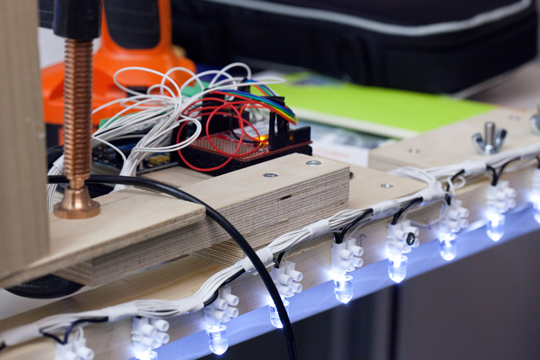
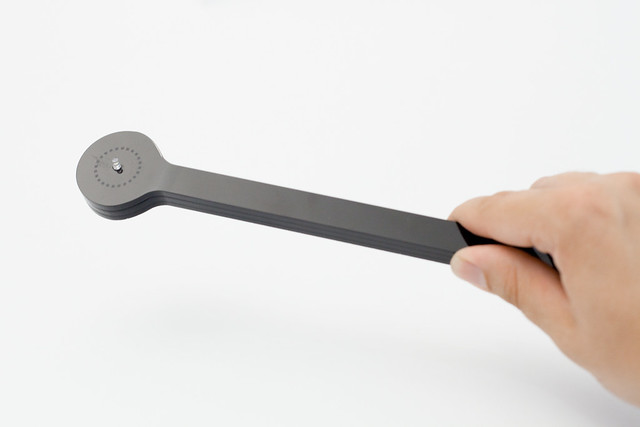
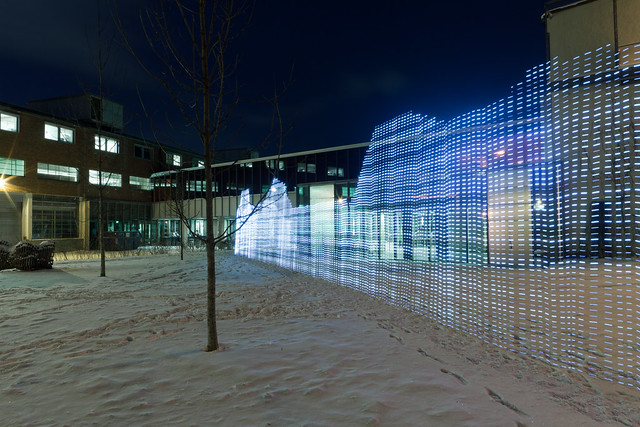





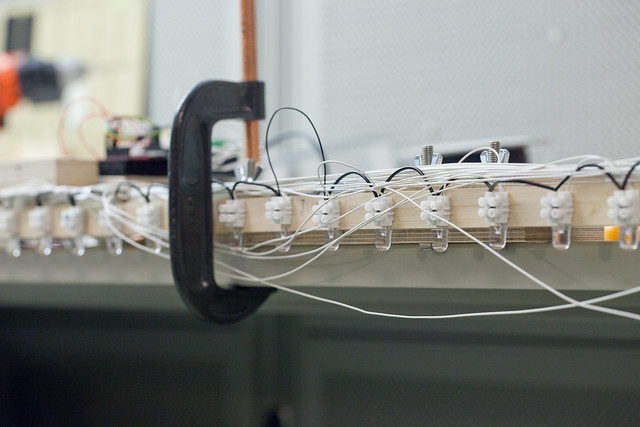
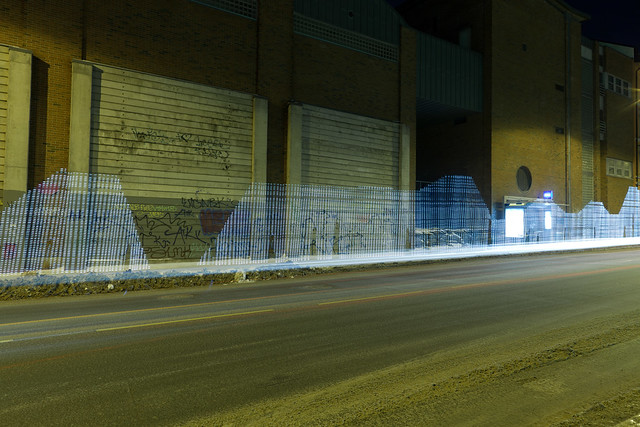

Greetings,
This is great work you are doing!
Some ideas regarding data acquisition:
1) As your sensor is in a rod array your constants include the relative distance between, I was thinking about variables and other constants and how you could aggregate more data for differential exploration. In short I was thinking of some ways to repeat the sensing with other constants in order to create a rich data scape. So initial ideas include:
1) Using public transportation on somewhat constant routes to cary your sensors. I can imaging the rod spending a day or week mounted on a city bus or train that repeats a route.
I was considering time as a variable. The data you acquire with the current sensor set creates a grid over time. it would be interesting but costly to have a fixed grid as well to record temporal variations in the signals. This too could be integrated with the urban concept of municipality. select places within the school or city scape where a small grid could be secured for a reasonable period of time.
You have created the sensor system, keep going in your original direction but consider parallel and redundant courses with this system to aggregate rich sets of data that are crying out to be compared!
You have also done a great job at designing a project that must certainly keep you invigorated. Congratulations on that as well!
Aside from many roles, I have been a technical director for a major video artist. We explored many possibilities with many forms of sensors and have applied them in public spaces and museum installations. I am very excited about the work you are doing and support your efforts.
All the best,
Mac Rutan
This is great…….I made a static “Wi-Fi” wall pc. using silicon wafers & antenna several years ago.
You can see it at my site: http://www.markdotzler.com
I like what you’re doing!!!!
Hey! this project rocks! I want to do it in Brazil!! Can you help me with the Arduino sketch? That would be very great, thanks and congrats!
Can you help me with the Arduino sketch? That would be very great, thanks and congrats!